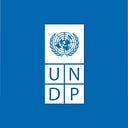“This village needed this project, and it arrived in the right moment.”
Restoring natural habitats and protecting coastal communities in Cuba

We ourselves were destroying this world, but now we have a project of environmental education, we work with all the schools and are linked to the population. Here you can breathe a healthy world.” — María Teresa, Mayabeque Province
Nature, now more than ever, needs us to pay attention to its warning signals and to take care of it, so it can take care of us. María Teresa, 54, is the administrator of the protected area of the Gulf of Batabanó, in Mayabeque, Cuba. She knows that loss and damage to mangroves makes coastal communities vulnerable. Mangroves occupy 5.1 percent of Cuba’s land area and are found on 70 percent of its coasts. “They recognize that the value of the mangrove resides not only in the benefits they obtain from it, but also represents a benchmark around which they have developed their lives, their sense of belonging and their identity,” says Juliette Díaz, Coordinator, Environment Agency



To restore Cuba’s mangroves, the ‘Reduction of vulnerability to coastal flooding through ecosystem-based adaptation in the south of Artemisa and Mayabeque Provinces’ project focusses on an 84 kilometre stretch of coastline between Punta Sucia and Punta Mora on the southern coast.
It’s backed by the Adaptation Fund and implemented by UNDP and works with Cuba’s Ministry of Science, Technology and Environment and the Ministry of Agriculture.
The restoration includes comprehensive reforestation, increased monitoring and control, and detailed vulnerability assessments to better understand how climate change is affecting communities and their ecosystems.
In 2017 Cuba approved its State Plan to Face Climate Change (‘Tarea Vida’), which recognized the country’s high vulnerability to climate change. It sets strategic priorities and identifies the effects of salinization, flooding, and extreme weather.

María is committed to protecting mangroves and teaching the next generation about their importance. “This village needed this project, and it arrived in the right moment,” she said. “The mangroves were in a very bad state.”
Through a combination of natural regeneration and planting, the project embodies the integrated management of land, water and living resources that promotes conservation and sustainable use in an equitable way.
Four years in, mangroves are sprouting, populations of wildlife, shrimp, and fish are increasing, and flooding is more controlled.
“It means that the mangrove is recuperating, that the natural regeneration that wasn’t happening before is occurring,” said Vicente Núñez, of the Forest Company in Artemisa Province’s Cajío coast.
The project will take time. Mangroves take 10–15 years to mature, but Artemisa residents say the effects of wind and floods have lessened.
The project works actively with local schools looking to create awareness and promote a strong link between coastal populations and their environment.

“We have young people that are incorporating themselves into this, are very committed and always want to learn more. Children learn here and return to their homes and transmit knowledge to their parents,” María said.
A recent cost benefit analysis of the project, calculated that the restored mangroves have reaped around UD$107 million for the community. This includes the benefits from flooding control, increased fish stocks, increased income from apiculture and reduced losses in agriculture and livestock from saline intrusion.
Through planting mangroves and fostering their natural regeneration, placing stake lines to reduce sea surges, cleaning canals, and promoting coastal forest growth through education and sustainable activities, the project is making a positive difference in reducing vulnerabilities and making local communities more resilient to climate change in Cuba’s southern provinces.
The Government of Cuba is working with UNDP to extend the project along Cuba’s southern coastline through the Green Climate Fund (GCF).

Story: Luis David Almeida Famada, Tomas Escobar Herrera, Montserrat Xilotl, Andrea Egan Photos: UNDP Cuba/Manglar Vivo Project
